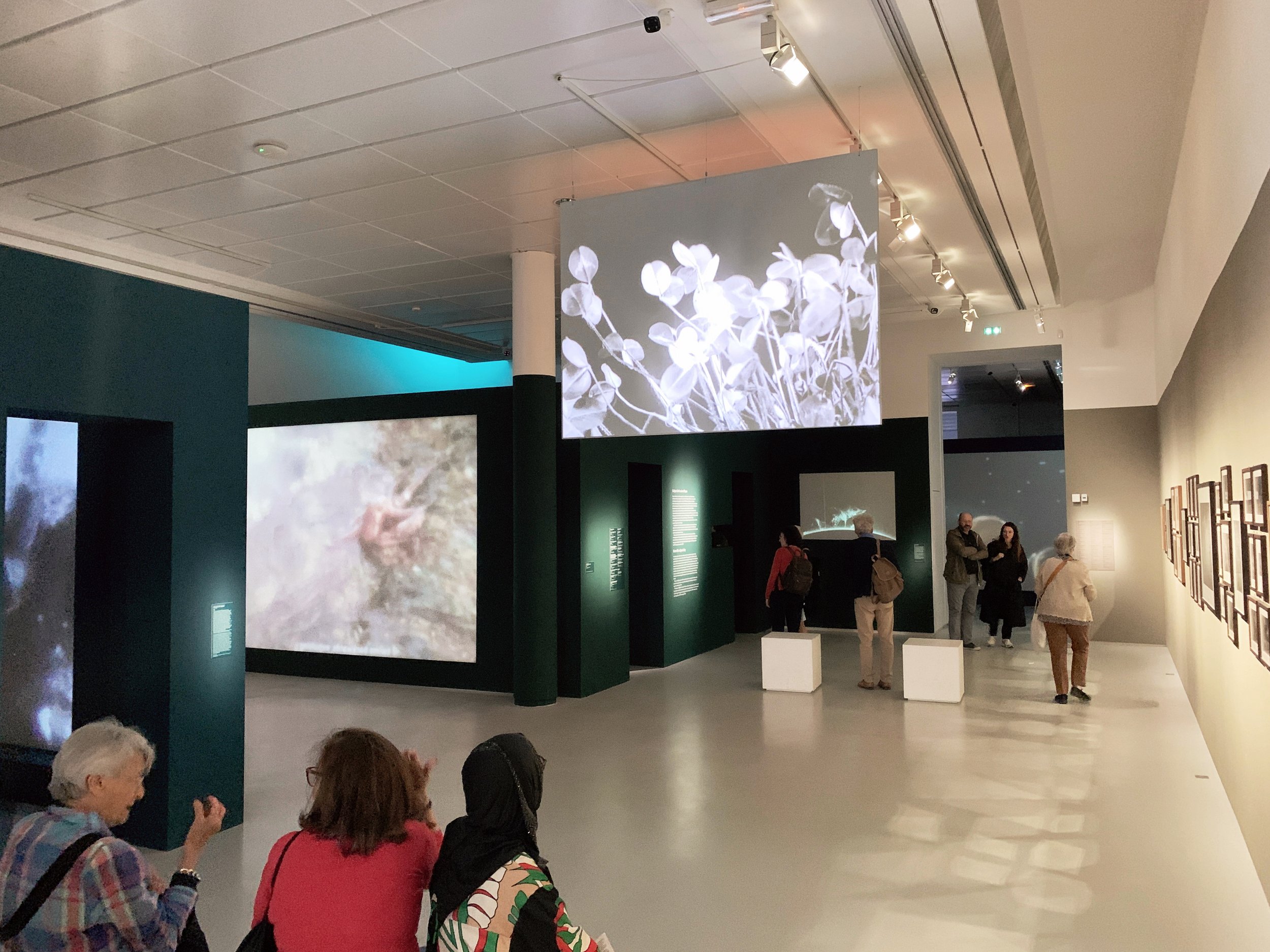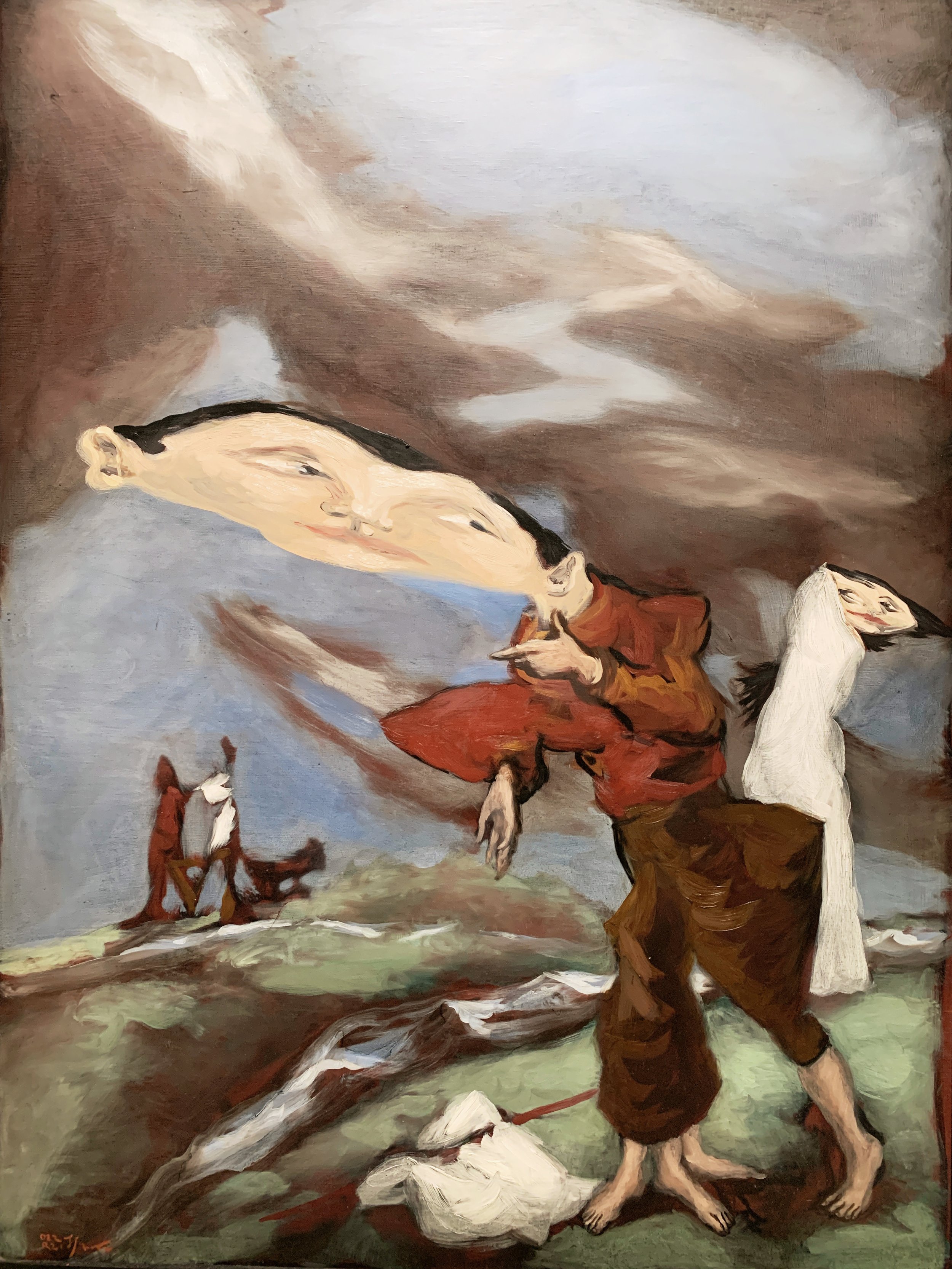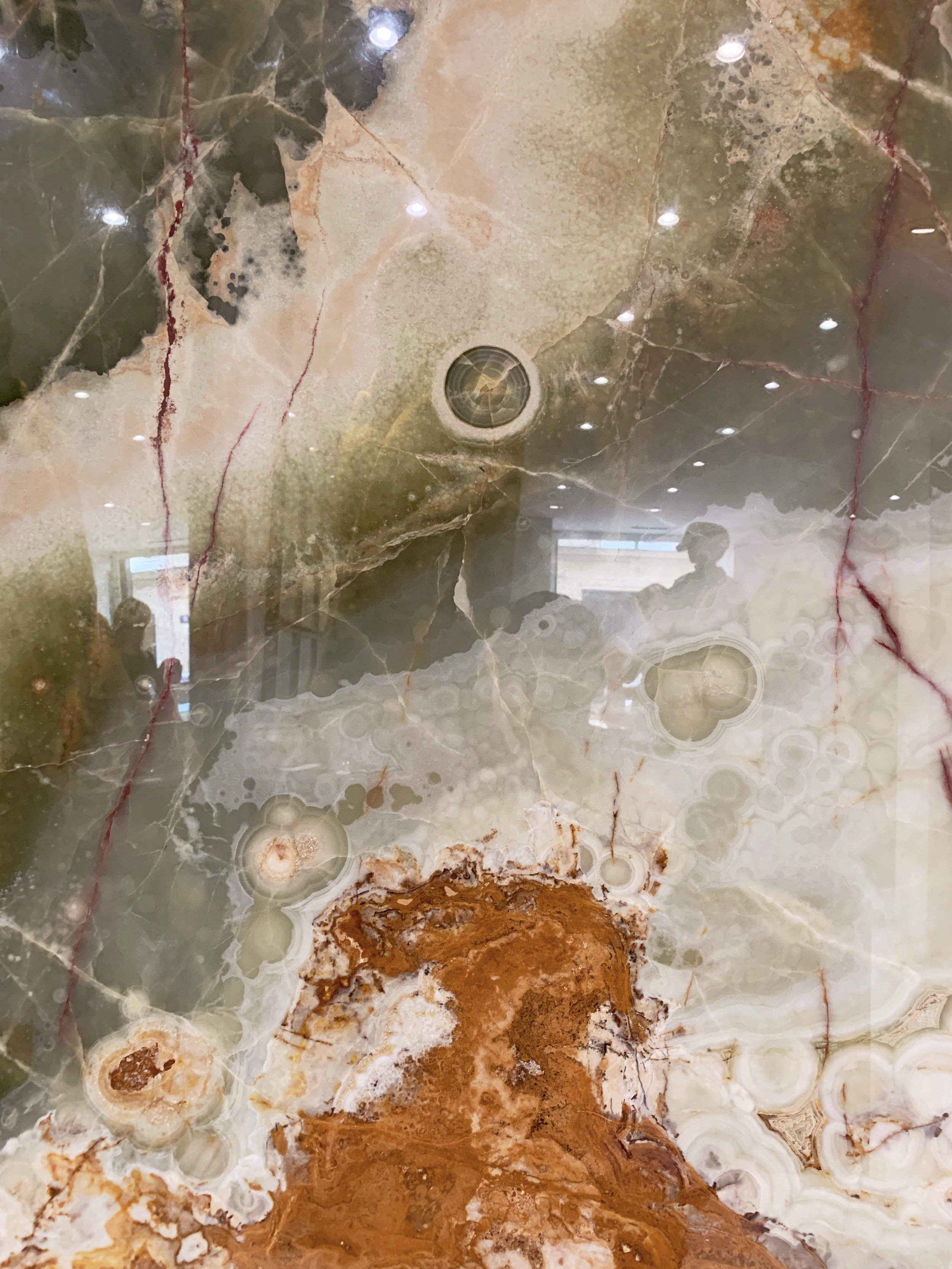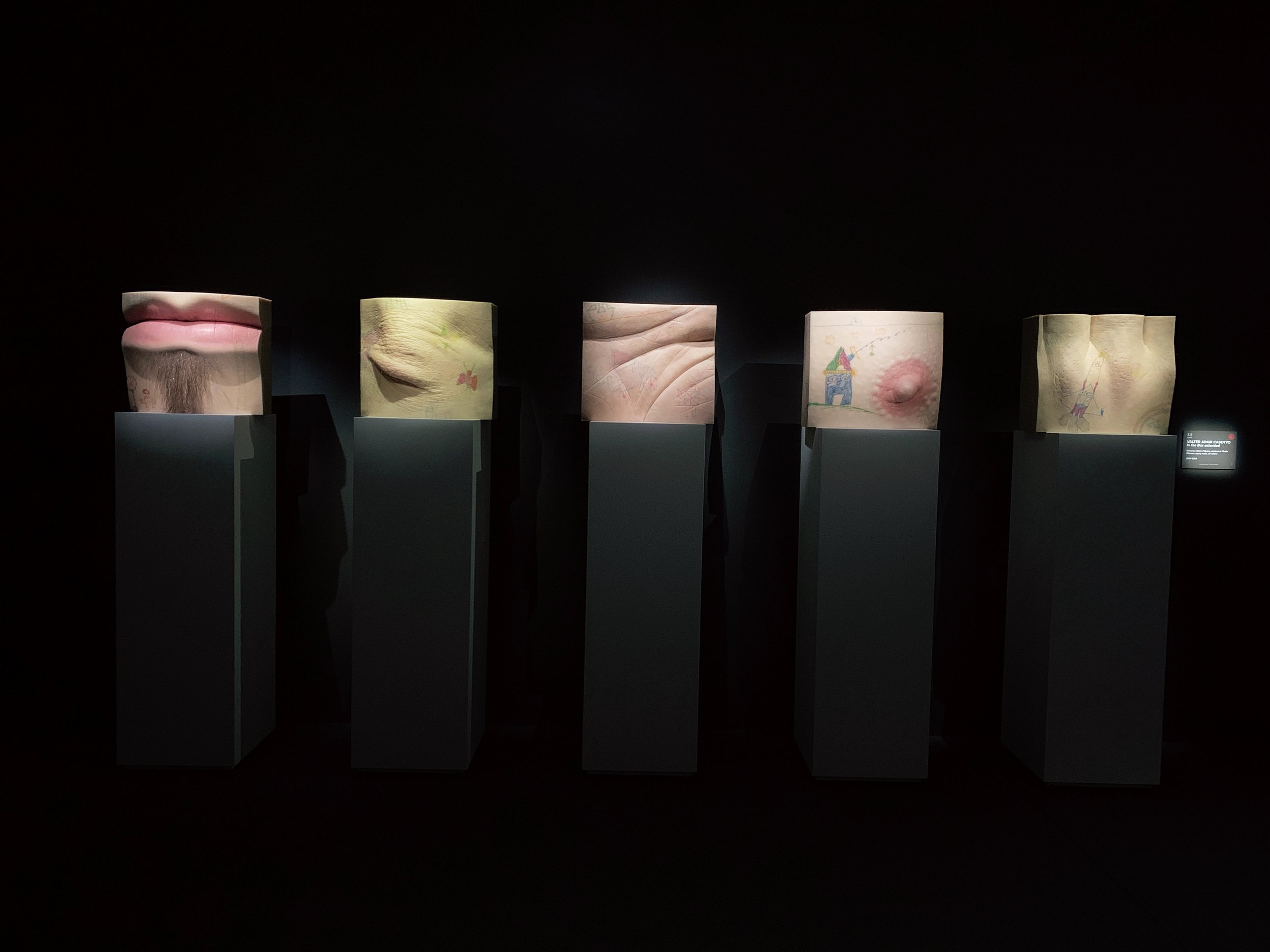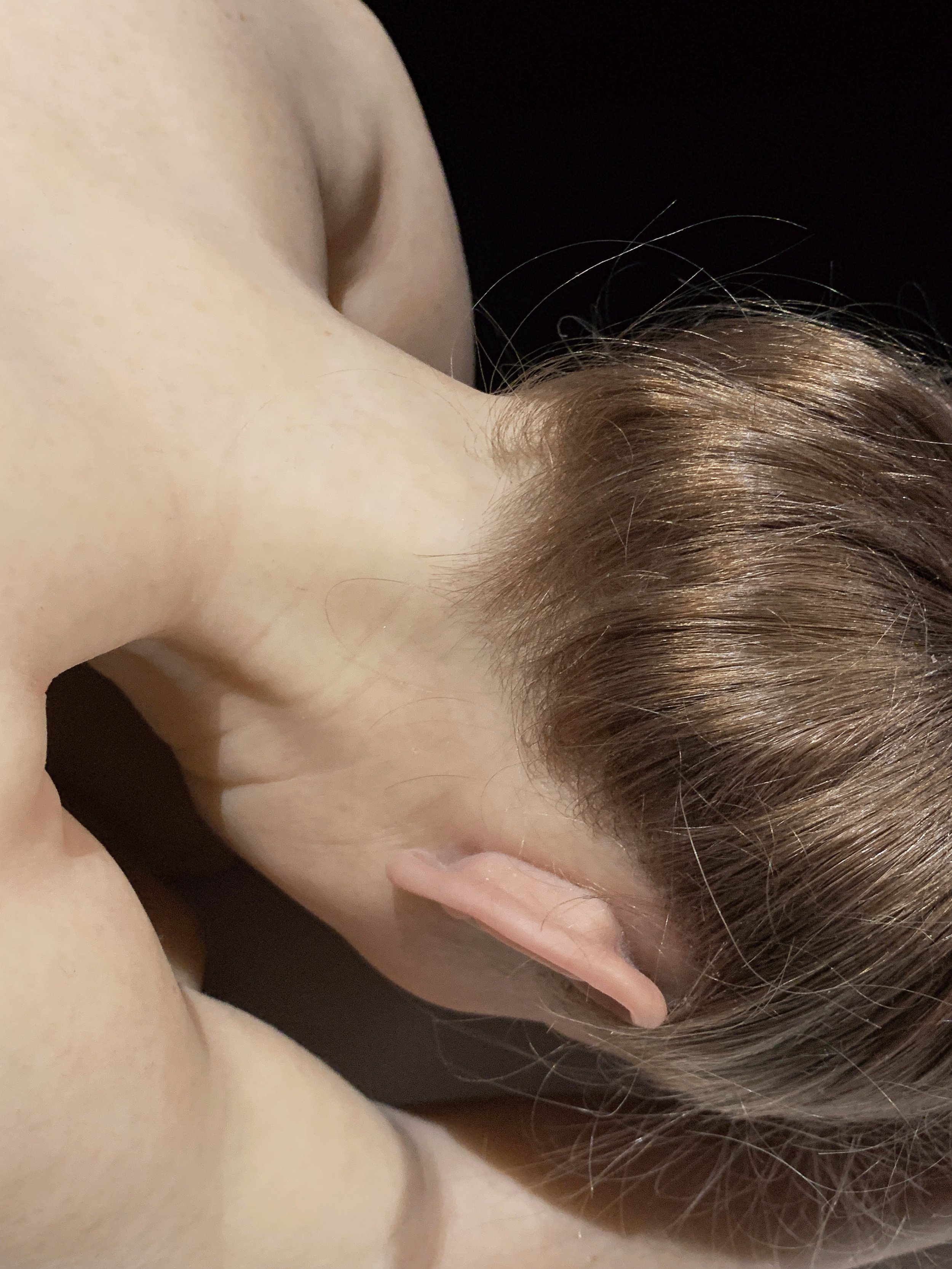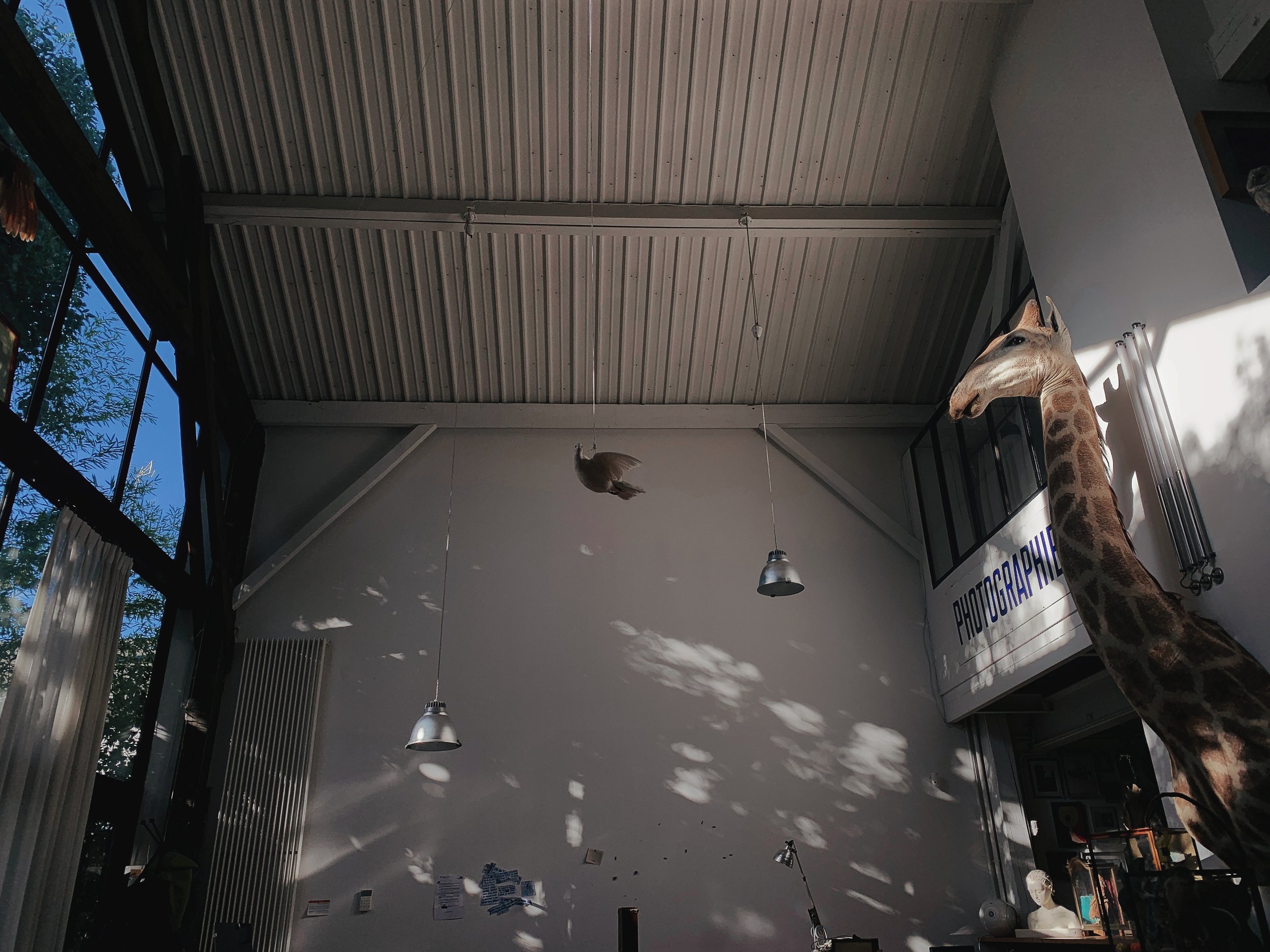I went to the pompidou because it was monday and most art institutions were closed. I had no big interest really in seeing Garoustes paintings. Walking through the streets slowly I was overcome with the quotidian moments of wonder in Paris—that more than any city I’ve ever been, knows how to appreciate its abundant beauty. It’s a city that lingers, and smiles, and loves to look at itself. Even with my meager french I feel I communicate more here, with eyes and physical humor. Gesturally and playfully.
Outside of the pompidou was an improv dance group, reveling in courageous failure with moments of transcendent poetry. On Mondays I’m sometimes gripped with a deep existential anxiety and this group dancing in the plaza, inviting everyone to dance with them was balming. I laughed out loud when I overheard one of the group asking what day it was. This is a wish, to live in a world where people can feel so carefree on a monday.
I move through the world with Sianne Ngai’s conception of the gimmick and see it everywhere in art and life. Garouste perhaps could be said to paint the libidinal undercurrents coursing through the gimmick. I once went to the Oakland Coliseum swap meet and saw an acquaintance called Lupe delivering a foreclosed storage unit to the market. As they unloaded the trucks, a small group began to sort through the contents, small containers filled with small disassembled mechanical devices and boxes and boxes of 90’s and aughts pornography. I slowly realized this was the abandoned storage unit of a magician pornographer—or so I thought of them. This magician pornographer has become all bound up in my mind with Ngai’s gimmick. As I wander through the cool white airy cubes of contemporary art I think to myself, there’s another gimmick and what a magician pornographer! I watched the tricks and pornography disappear into the market for a little while and then found a small unwanted box containing several decades of a freemasons journal called The New Age. I bought it from Lupe and scanned a few images thinking I might do an essay about it.
In the pompidou bookstore I sat and read an issue of Artforum, almost cover to cover and thought it would be interesting to do a deconstructive, becoming-ergon of the parergonal discourse of evaluation style piece about it— maybe something conversational even with a friend or thoughtful interlocutor. There were several pieces about documenta, one by David Joselit that seemed to do a tonal 180 from beginning to end. It started with big reductive declarations and ended on a more modest note. There was an interview between HUO and what was described as an artist called PAK who made a fortune with NFT’s. The questions felt so incredibly ideological, acritical and mystifying, with an almost comical, translucent veneer of Glissant. An editor of a major art journal over lunch casually described him as the most corrupt person in the industry. HUO is such a fascinating character to me, this incredible articulation of emerging ideologies. He’s like our Warhol. And a master showman of the 24/7 marathon, experiential, spectacle-economy in an extraordinarily intelligent, slightly neuro-divergent, tech-enthusiast, capital-friendly, suisse-neutral register. The NFT phenomenon, in all its horror, is doubly interesting in its revealing approximation of art market dynamics as well as a case study of the way art is used to bolster the financialization of previously lesser-capitalized aspects of our shared lifeworld.
Back in California we watched the Amazon funded Lord of the Rings prequel franchise and I was partially seduced by the lushness of the CGI augmented new zealand production before eventually turning away from the boring and exhausting archetypal violent drama. Is an Amazon colosseum in your home and sugar-filled groceries and pharmaceuticals delivered to your door our epochs panem et circenses? I also realize that good sourdough and biennial-scale cultural offerings seems to be what I’m often most concerned with.
It strikes me that what we consider performance art, by and large, feels like the relentless pursuit of attention and self-spectacularization. I was reading an interview between Byung-Chul Han and Thomas Ostermeier, and they were lamenting the tone of contemporary theater saying that everyone was yelling as though they were angry with the audience. This is kind of how I feel in most performance art settings. Maybe less that they are angry, but more they are trying waay too hard, its like a cartoon register. Paris feels a bit like a circus on this trip. We went to an opening at 104 where they gave us tokens to stand in line for a coney island of unsatisfying art experiences. Between the last time I was there and now I’ve watched it really build up, with nice things to be sure, but the big open space where everyone gathers seems to be shrinking and becoming more organized and sanitized. We saw Pina Bausch’s kinetic Rite of Spring in what appeared to be a circus tent. I arrived early and finished the pocket edition of Byung-Chul Han’s Shanzhai text that colored my experience of this interpretation of Stravinsky. I had already mostly absorbed much of this text through its cultural reverberations but reveled retrospectively in its lucid precision. We saw an unsatisfying Magic Flute, Pippo Delbono’s Amore and piece on a boat moving down the canals. In each case it was an excess of affect that subtracted from the work for me. I wanted to turn everything down by half at least and my favorite moments were quiet, almost still, gestures of reprieve, I wish I could prolong.
I saw a work, on the recommendation of Sophie’s friend Eric, by Jonathan Burrows and Matteo Fargion at Lafayette Anticipations. It was two duets, Both Sitting and Rewriting, that elaborated a beautiful language-world of gesture and a retrospective and re-enlivening revisition of an old work, accompanied by casio keyboard. They are works of modest means, containing monumental depths, cosmological even, and the life-work of two brilliant artists who have grown together in the way only more-than-individuals can. I loved it so much. It overwhelmed me with its beauty, subtlety, intelligence and great humour. In my mind, throughout their performance, I awarded them the MacArthur, a Nobel, all the wreaths, leafs, circles, decorations and so on.








